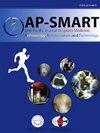65岁及以上患者不可修复肩袖撕裂的上囊重建术和反向肩关节置换术的临床效果比较:一项倾向评分匹配的研究
IF 1.4
Q3 ORTHOPEDICS
Asia-Pacific Journal of Sport Medicine Arthroscopy Rehabilitation and Technology
Pub Date : 2025-09-23
DOI:10.1016/j.asmart.2025.08.001
引用次数: 0
摘要
背景/目的对于患有大量不可修复的肩袖撕裂(mrct)的年轻患者,上囊重建术(SCR)是一种可行的手术治疗选择,而SCR和反向肩关节置换术(RSA)是65岁以上不可修复的mrct患者可靠的治疗方法。本研究旨在比较年龄≥65岁无关节炎mrct患者的关节镜SCR和RSA的结果。该回顾性比较研究纳入了202例年龄≥65岁的患者,这些患者在2017年1月至2021年12月期间使用3-4毫米单层人脱细胞真皮基质或RSA进行了SCR。所有患者术后随访至少2年。根据年龄、性别、主臂受累、随访时间、体重指数、假性麻痹、骨密度、整体脂肪变性指数和肩袖撕裂大小进行倾向评分匹配。共有44例匹配的患者(22例SCR和22例RSA)被纳入分析。临床结果采用疼痛的视觉模拟量表(VAS)、美国肩关节外科医生评分(ASES)、恒定评分、单一评估数值评估(SANE)和活动范围(ROM)进行评估。术后放射学评估评估愈合失败。结果SCR组和RSA组在术前人口统计学数据、临床结果或活动ROM方面无显著差异。在最后的随访中,两组患者的疼痛、ROM和功能结果均有显著改善。SCR组的ase评分(88.6±7.5比81.0±12.0,p = 0.02)、Constant评分(72.4±8.9比65.0±7.0,p < 0.01)、SANE评分(87.2±8.4比81.2±6.8,p = 0.01)均显著高于RSA组。与RSA组相比,SCR组在前屈(157.7±21.2°比141.2±16.0°;p < 0.01)和内旋(8.1±1.4比9.5±2.0;p = 0.01)方面的术后活动ROM也优于RSA组。SCR组有6例(27.3%)患者出现愈合失败。结论65岁无肩关节关节炎患者术后2年scr和RSA均有可靠的改善。然而,SCR在前屈、内旋和功能评分方面提供了更好的结果。这些结果表明,在这一人群中,SCR比RSA更有效地治疗不可修复的MRCT。证据等级:III级,回顾性比较研究。本文章由计算机程序翻译,如有差异,请以英文原文为准。
Comparison of clinical outcomes of superior capsular reconstruction and reverse shoulder arthroplasty for irreparable rotator cuff tears in patients aged 65 and older: A propensity score-matched study
Background/objective
In young patients with massive irreparable rotator cuff tears (MRCTs), superior capsular reconstruction (SCR) is a viable surgical treatment option, whereas SCR and reverse shoulder arthroplasty (RSA) are reliable treatments for irreparable MRCTs in patients aged >65 years. This study aimed to compare the outcomes of arthroscopic SCR and RSA in patients with MRCTs without arthritis aged ≥65.
Methods
This retrospective comparative study included 202 patients ≥65 years old with irreparable MRCTs who had undergone either SCR using a 3–4 mm single-layer human acellular dermal matrix or RSA between January 2017 and December 2021. All patients underwent at least 2 years of postoperative follow-up. Propensity score matching was performed based on age, sex, dominant-arm involvement, follow-up duration, body mass index, pseudoparalysis, bone mineral density, global fatty degeneration index, and rotator cuff tear size. A total of 44 matched patients (22 with SCR and 22 with RSA) were included in the analysis. Clinical outcomes were assessed using the visual analog scale (VAS) for pain, American Shoulder and Elbow Surgeons (ASES) score, Constant score, Single Assessment Numeric Evaluation (SANE), and active range of motion (ROM). Postoperative radiological evaluations were performed to assess healing failure.
Results
No significant differences were observed in the preoperative demographic data, clinical outcomes, or active ROM between the SCR and RSA groups. At the final follow-up, significant improvements in pain, ROM, and functional outcomes were observed in both groups. However, the SCR group had significantly higher ASES scores (88.6 ± 7.5 vs. 81.0 ± 12.0; p = 0.02), Constant scores (72.4 ± 8.9 vs. 65.0 ± 7.0; p < 0.01), and SANE scores (87.2 ± 8.4 vs. 81.2 ± 6.8; p = 0.01) than the RSA group. Postoperative active ROM was also superior in the SCR group for forward flexion (157.7 ± 21.2° vs. 141.2 ± 16.0°; p < 0.01) and internal rotation (8.1 ± 1.4 vs. 9.5 ± 2.0; p = 0.01) compared with the RSA group. Healing failure occurred in 6 patients in the SCR group (27.3 %).
Conclusion
SCR and RSA resulted in reliable improvements 2 years post-surgery in patients aged >65 years without glenohumeral joint arthritis. However, SCR provided superior outcomes in terms of forward flexion, internal rotation, and functional scores. These results suggest SCR as a more effective treatment option than RSA for irreparable MRCT in this population.
Level of evidence
Level III, Retrospective comparative study.
求助全文
通过发布文献求助,成功后即可免费获取论文全文。
去求助
来源期刊
CiteScore
3.80
自引率
0.00%
发文量
21
审稿时长
98 days
期刊介绍:
The Asia-Pacific Journal of Sports Medicine, Arthroscopy, Rehabilitation and Technology (AP-SMART) is the official peer-reviewed, open access journal of the Asia-Pacific Knee, Arthroscopy and Sports Medicine Society (APKASS) and the Japanese Orthopaedic Society of Knee, Arthroscopy and Sports Medicine (JOSKAS). It is published quarterly, in January, April, July and October, by Elsevier. The mission of AP-SMART is to inspire clinicians, practitioners, scientists and engineers to work towards a common goal to improve quality of life in the international community. The Journal publishes original research, reviews, editorials, perspectives, and letters to the Editor. Multidisciplinary research with collaboration amongst clinicians and scientists from different disciplines will be the trend in the coming decades. AP-SMART provides a platform for the exchange of new clinical and scientific information in the most precise and expeditious way to achieve timely dissemination of information and cross-fertilization of ideas.

 求助内容:
求助内容: 应助结果提醒方式:
应助结果提醒方式:


